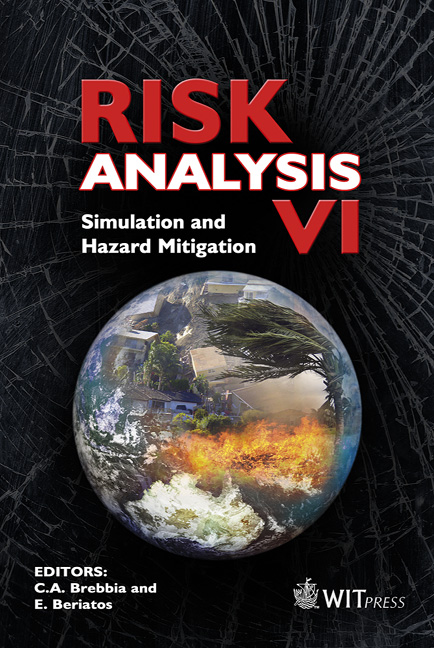Development Of A Radioecological Risk Assessment Tool For The Toulon Marine Area
Price
Free (open access)
Volume
39
Pages
8
Page Range
177 - 184
Published
2008
Size
1,406 kb
Paper DOI
10.2495/RISK080191
Copyright
WIT Press
Author(s)
C. Duffa, H. Thebault, S. Coudray, S. Charmasson & M. Arnaud
Abstract
Toulon naval base, located on the Mediterranean coast, is the first French military harbour. As it receives nuclear power ships, any possibility of accidental release of radionuclides is to be considered. To estimate post-accidental consequences in the marine environment and to propose adapted management plans, data concerning both radionuclides spatial dispersion and environmental sensitivity to this contamination are necessary. The French Institute for Radioprotection and Nuclear Safety (IRSN) developed an integrated tool to support experts and decision makers in post-accidental situations concerning this area. This management tool aims to combine radionuclides dispersion modelling and radioecological sensitivity local maps to outline vulnerable areas in advance of a known release. The calculation of radionuclides dispersion is based on an existing hydrodynamic model (MARS 3D developed by IFREMER). Data concerning local bathymetry, sedimentology and climatic conditions are necessary to build a model with a good resolution (100 m grid). The radioecological sensitivity of the marine environment is estimated and mapped after a specific study. The studied area is divided into several unit zones, for which a sensitivity index will be attributed. Sensitivity is determined by the relationship between different factors: the ecosystem intrinsic characteristics (physical or biological), the radioecological parameters (dependant of the concerned radionuclide) and the socio-economical resources. Values are attributed to these factors regarding their efficiency to increase or decrease the final sensibility. Their combination results in a sensitivity index that is reported in a geographical information system (GIS). The development of such a management tool requires an important data collection step. The results are based on the local environment characterization. Keywords: radioactive pollution, post-accidental management, marine environment, vulnerability.
Keywords
radioactive pollution, post-accidental management, marine environment, vulnerability.





